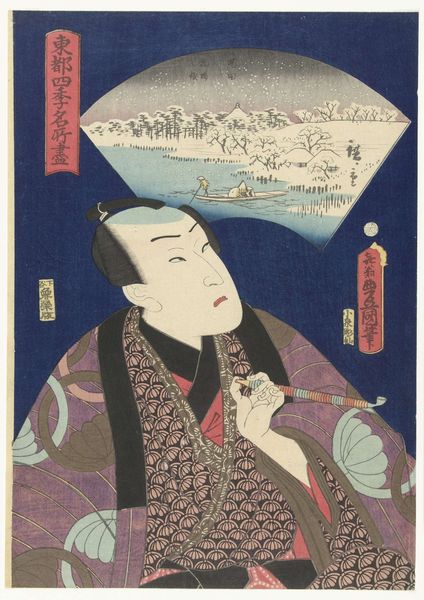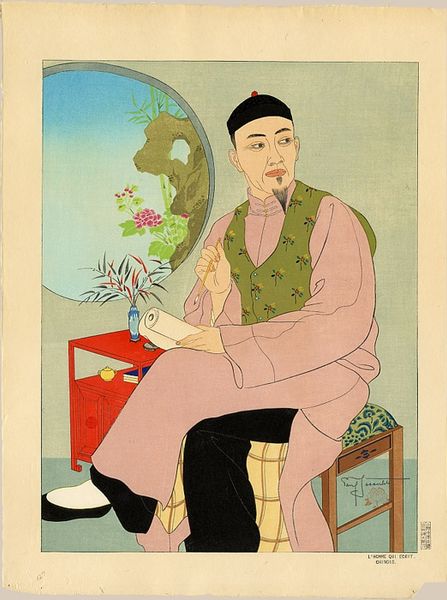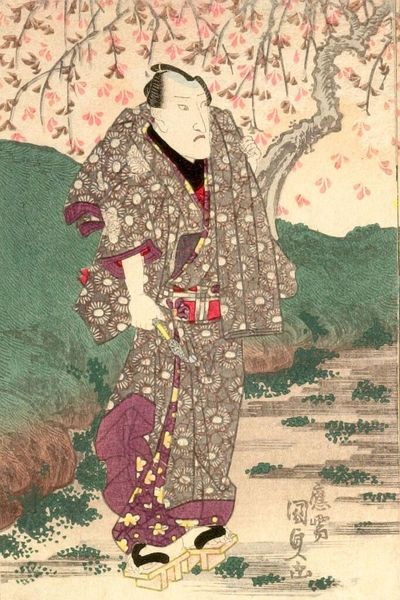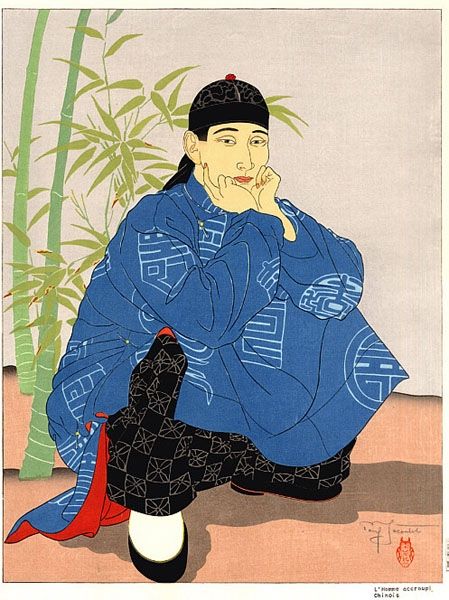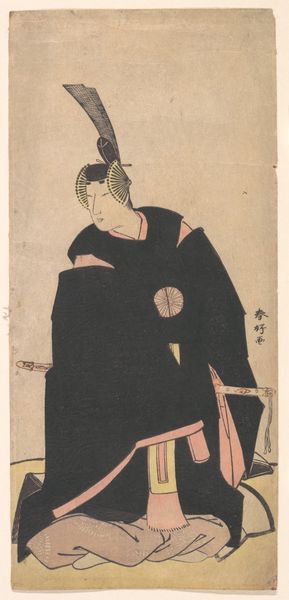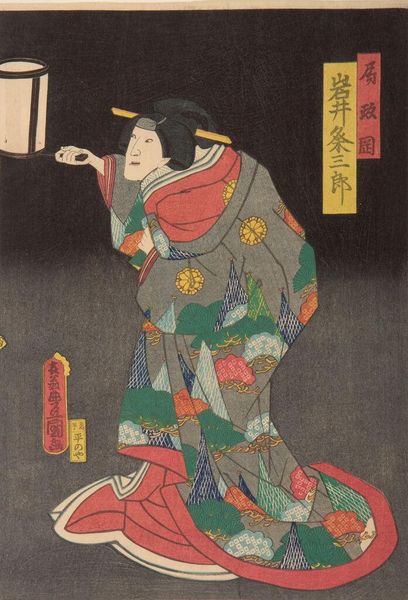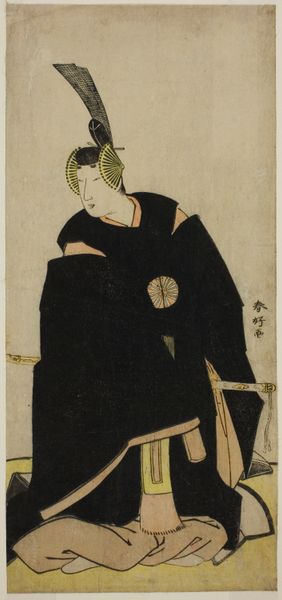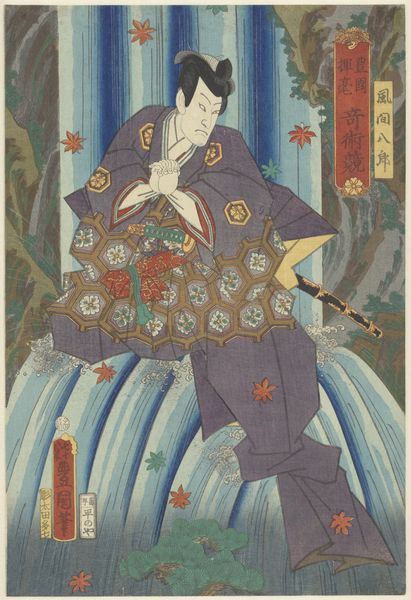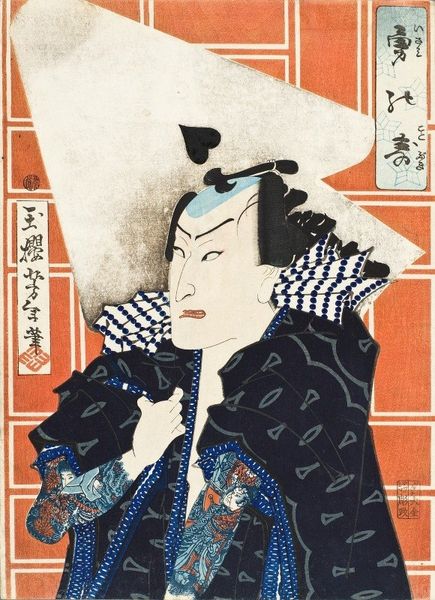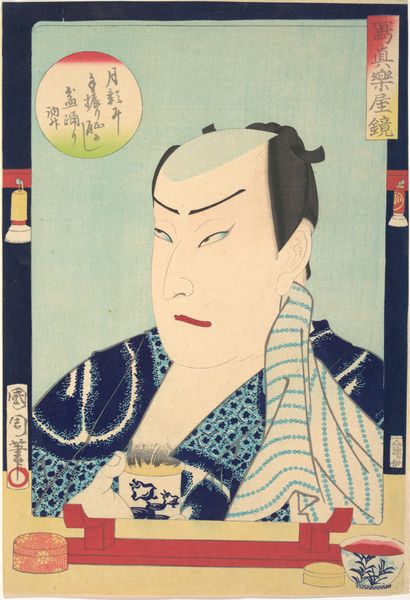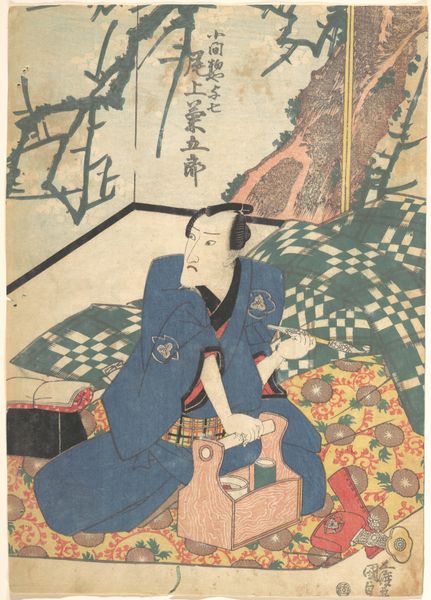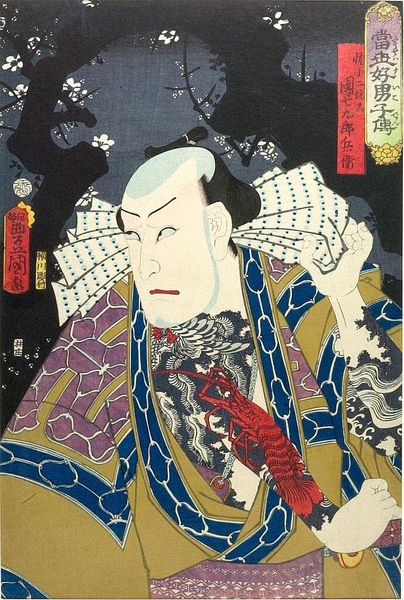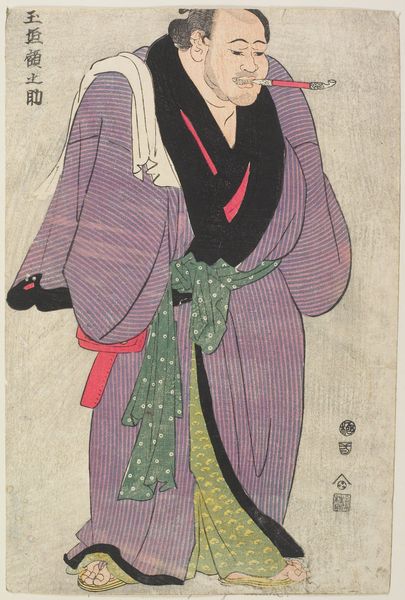
Copyright: Public domain Japan
Curator: This woodcut print, "La Corbeille De Nefles. Chinois" by Paul Jacoulet, made around 1950, presents a striking portrait. What are your initial thoughts about it? Editor: It’s visually captivating, the stark black clothing of the figure really contrasts against the detailed background. And there's something almost staged about the composition, making me wonder about the artist’s intent. How do you interpret this work, considering Jacoulet's process? Curator: Let's consider the socio-economic factors present during its making. Jacoulet, a Frenchman creating Ukiyo-e style prints of Asian subjects in the mid-20th century, operates in a complex web of cultural appropriation and artistic exchange. The meticulous woodblock printing process, requiring skilled artisans, raises questions about labor and the commodification of Eastern aesthetics for a Western audience. What materials were utilized, where did they come from, and who were the makers? It all plays into understanding its essence. Does this perspective resonate with you? Editor: That's a great point, it completely changes the way I see it! I was focused on the figure and the landscape elements, but thinking about the production itself makes me consider who benefited from this piece and whose stories are being told. Curator: Precisely. The print becomes more than just a pretty picture, doesn't it? Consider how the traditional Ukiyo-e methods, heavily reliant on collaboration between artist, carver, and printer, are being re-contextualized here by a Western artist working with those techniques. It becomes a commentary on the cross-cultural consumption and transformation of artistic practices. Editor: So, understanding the materials and production helps us deconstruct the layers of cultural exchange, labor, and potentially even exploitation embedded within the artwork? Curator: Exactly. It's a lens through which we can unpack its social and historical implications, highlighting the means of its making to reveal broader power dynamics. It reveals how what is included in the final print and just as important, what's left out in the depictions. Editor: Wow, I'll never look at a print the same way again. Thanks! Curator: My pleasure. Materiality and process provide powerful narratives, enriching our appreciation and critical understanding.
Comments
No comments
Be the first to comment and join the conversation on the ultimate creative platform.
